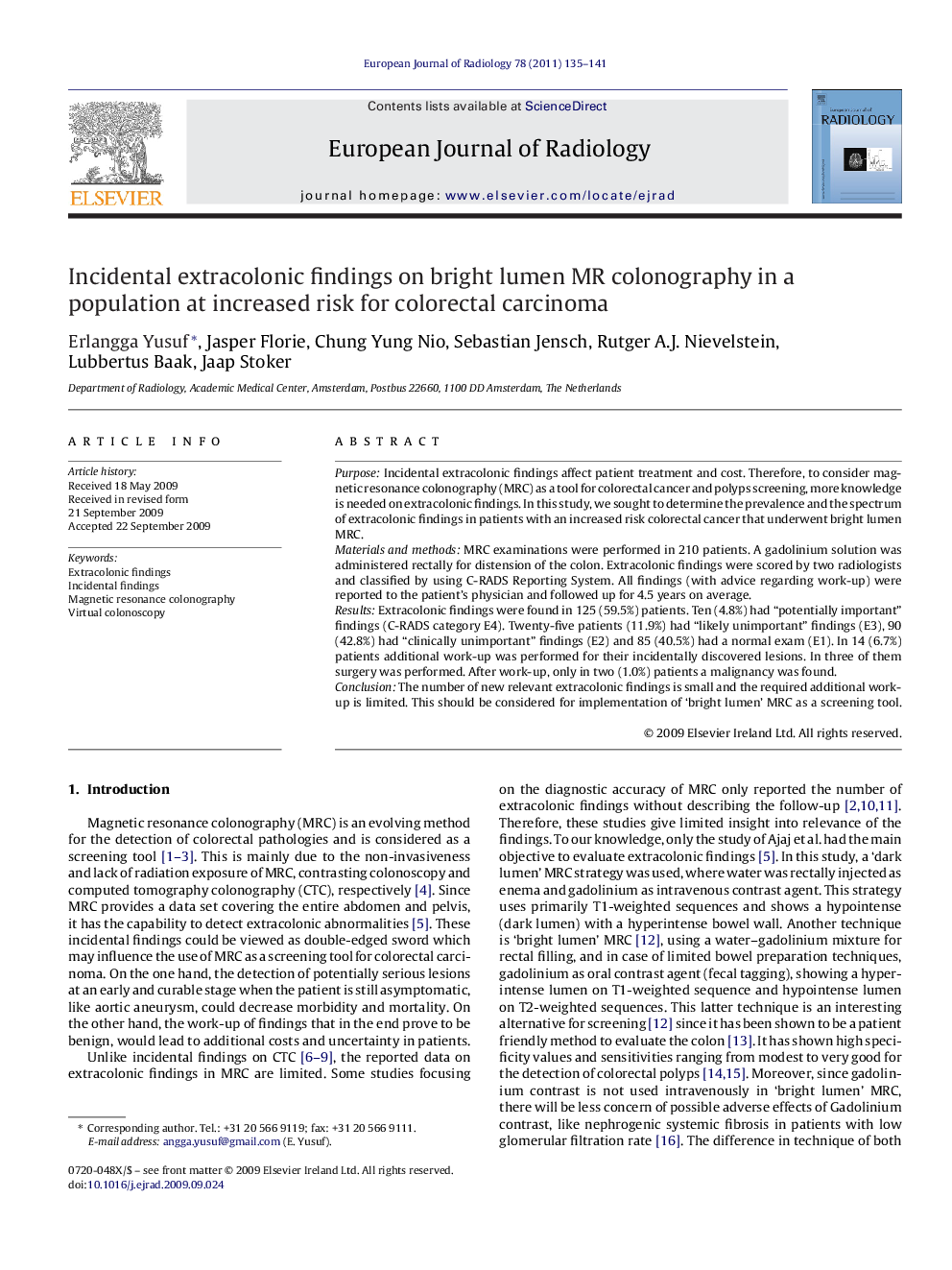| Article ID | Journal | Published Year | Pages | File Type |
|---|---|---|---|---|
| 4227240 | European Journal of Radiology | 2011 | 7 Pages |
PurposeIncidental extracolonic findings affect patient treatment and cost. Therefore, to consider magnetic resonance colonography (MRC) as a tool for colorectal cancer and polyps screening, more knowledge is needed on extracolonic findings. In this study, we sought to determine the prevalence and the spectrum of extracolonic findings in patients with an increased risk colorectal cancer that underwent bright lumen MRC.Materials and methodsMRC examinations were performed in 210 patients. A gadolinium solution was administered rectally for distension of the colon. Extracolonic findings were scored by two radiologists and classified by using C-RADS Reporting System. All findings (with advice regarding work-up) were reported to the patient's physician and followed up for 4.5 years on average.ResultsExtracolonic findings were found in 125 (59.5%) patients. Ten (4.8%) had “potentially important” findings (C-RADS category E4). Twenty-five patients (11.9%) had “likely unimportant” findings (E3), 90 (42.8%) had “clinically unimportant” findings (E2) and 85 (40.5%) had a normal exam (E1). In 14 (6.7%) patients additional work-up was performed for their incidentally discovered lesions. In three of them surgery was performed. After work-up, only in two (1.0%) patients a malignancy was found.ConclusionThe number of new relevant extracolonic findings is small and the required additional work-up is limited. This should be considered for implementation of ‘bright lumen’ MRC as a screening tool.
